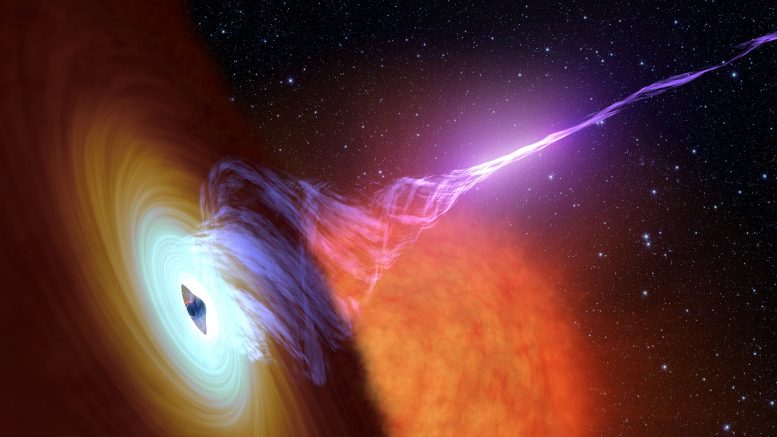
Light My Fireball: Artist’s rendering of a black hole emitting a jet of hot gas known as plasma. An international team of scientists, including Rochester researchers, has generated plasma “fireballs” experimentally, opening a new frontier in laboratory astrophysics. Credit: NASA/JPL-Caltech
An international team of scientists has developed a novel way to experimentally produce plasma ‘fireballs’ on Earth.
Researchers have successfully generated relativistic electron-positron plasmas in a laboratory setting, simulating conditions found near black holes and neutron stars. This groundbreaking work, involving institutions like the University of Rochester and CERN, opens new avenues for studying complex astrophysical phenomena.
Extreme Astrophysical Environments
Black holes and neutron stars are among the densest known objects in the universe. Within and around these extreme astrophysical environments exist plasmas, the fourth fundamental state of matter alongside solids, liquids, and gases. Specifically, the plasmas at these extreme conditions are known as relativistic electron-positron pair plasmas because they comprise a collection of electrons and positrons—all flying around at nearly the speed of light.
Breakthrough in Laboratory Plasma Production
While such plasmas are ubiquitous in deep space conditions, producing them in a laboratory setting has proved challenging.
Now, for the first time, an international team of scientists, including researchers from the University of Rochester’s Laboratory for Laser Energetics (LLE), has experimentally generated high-density relativistic electron-positron pair-plasma beams by producing two to three orders of magnitude more pairs than previously reported. The team’s findings appear in Nature Communications.
The breakthrough opens the doors to follow-up experiments that could yield fundamental discoveries about how the universe works.
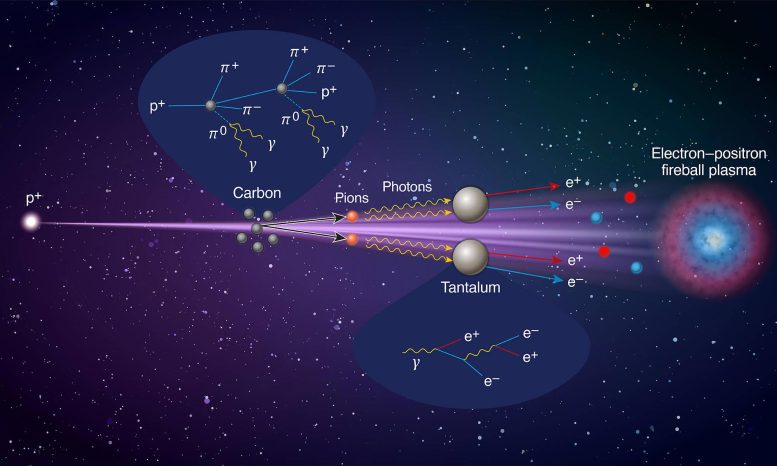
How It Works: A proton (far left) from the Super Proton Synchrotron (SPS) accelerator at CERN impinges on carbon nuclei (small gray spheres). This produces a shower of various elementary particles, including a large number of neutral pions (orange spheres). As the unstable neutral pions decay, they emit two high-energy gamma rays (yellow squiggly arrows). These gamma rays then interact with the electric field of Tantalum nuclei (large gray spheres), generating electron and positron pairs and resulting in the novel electron-positron fireball plasma. Because of these cascade effects, a single proton can generate many electrons and positrons, making this process of pair plasma production extremely efficient. Credit: University of Rochester Laboratory for Laser Energetics illustration / Heather Palmer
Implications for High-Energy-Density Science
“The laboratory generation of plasma ‘fireballs’ composed of matter, antimatter, and photons is a research goal at the forefront of high-energy-density science,” says lead author Charles Arrowsmith, a physicist from the University of Oxford who is joining LLE in the fall. “But the experimental difficulty of producing electron-positron pairs in sufficiently high numbers has, to this point, limited our understanding to purely theoretical studies.”
Novel Experimental Techniques
Rochester researchers Dustin Froula, the division director for plasma and ultrafast laser science and engineering at LLE, and Daniel Haberberger, a staff scientist at LLE, collaborated with Arrowsmith and other scientists to design a novel experiment harnessing the HiRadMat facility at the Super Proton Synchrotron (SPS) accelerator at the European Organization for Nuclear Research (CERN) in Geneva, Switzerland.
That experiment generated extremely high yields of quasi-neutral electron-positron pair beams using more than 100 billion protons from the SPS accelerator. Each proton carries a kinetic energy that is 440 times larger than its resting energy. Because of such large momentum, when the proton smashes an atom, it has sufficient energy to release its internal constituents—quarks and gluons—which then immediately recombine to produce a shower that ultimately decays into electrons and positrons.
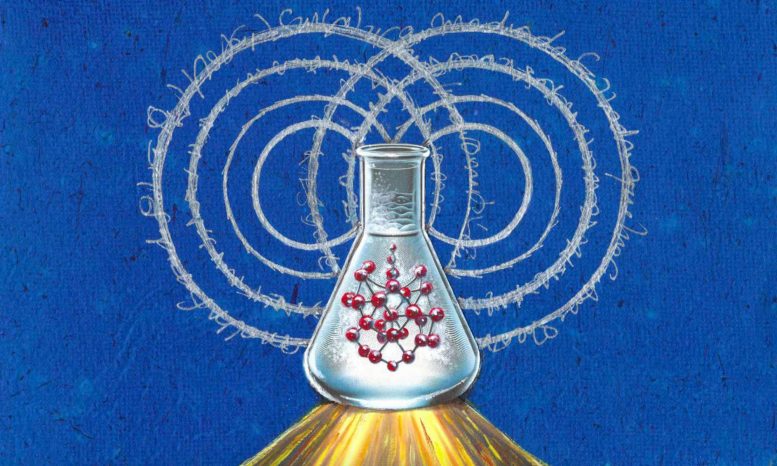
A proton (far left) from the Super Proton Synchrotron (SPS) accelerator at CERN impinges on carbon nuclei (small gray spheres). This produces a shower of various elementary particles, including a large number of neutral pions (orange spheres). As the unstable neutral pions decay, they emit two high-energy gamma rays (yellow squiggly arrows). These gamma rays then interact with the electric field of Tantalum nuclei (large gray spheres), generating electron and positron pairs and resulting in the novel electron-positron fireball plasma. Because of these cascade effects, a single proton can generate many electrons and positrons, making this process of pair plasma production extremely efficient. Credit: University of Rochester Laboratory for Laser Energetics illustration / Heather Palmer
Laboratory Generation of Astrophysical Plasmas
In other words, the beam they generated in the lab had enough particles to start behaving like a true astrophysical plasma.
“This opens up an entirely new frontier in laboratory astrophysics by making it possible to experimentally probe the microphysics of gamma-ray bursts or blazar jets,” Arrowsmith says.
The team has also developed techniques to modify the emittance of pair beams, making it possible to perform controlled studies of plasma interactions in scaled analogs of astrophysical systems.
Enhancing Understanding of Cosmic Phenomena
“Satellite and ground telescopes are not able to see the smallest details of those distant objects and so far we could only rely on numerical simulations. Our laboratory work will enable us to test those predictions obtained from very sophisticated calculations and validate how cosmic fireballs are affected by the tenuous interstellar plasma,” says coauthor Gianluca Gregori, a professor of physics at the University of Oxford.
Moreover, he adds, “The achievement highlights the importance of exchange and collaboration between experimental facilities around the world, especially as they break new ground in accessing increasingly extreme physical regimes.”
The team’s findings come amid ongoing efforts to advance plasma science by colliding ultrahigh-intensity lasers, an avenue of research that will be explored using the NSF OPAL Facility.
Reference: “Laboratory realization of relativistic pair-plasma beams” by C. D. Arrowsmith, P. Simon, P. J. Bilbao, A. F. A. Bott, S. Burger, H. Chen, F. D. Cruz, T. Davenne, I. Efthymiopoulos, D. H. Froula, A. Goillot, J. T. Gudmundsson, D. Haberberger, J. W. D. Halliday, T. Hodge, B. T. Huffman, S. Iaquinta, F. Miniati, B. Reville, S. Sarkar, A. A. Schekochihin, L. O. Silva, R. Simpson, V. Stergiou, R. M. G. M. Trines, T. Vieu, N. Charitonidis, R. Bingham and G. Gregori, 12 June 2024, Nature Communications.
DOI: 10.1038/s41467-024-49346-2
In addition to LLE, University of Oxford, and CERN, collaborating institutions on this research include the Science and Technology Facilities Council Rutherford Appleton Laboratory (STFC RAL), the University of Strathclyde, the Atomic Weapons Establishment in the UK, the Lawrence Livermore National Laboratory, the Max Planck Institute for Nuclear Physics, the University of Iceland, and the Instituto Superior Técnico in Portugal.
This project has received funding from the European Union’s Horizon Europe Research and Innovation program under Grant Agreement No 101057511 (EURO-LABS).

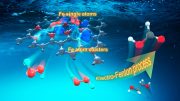






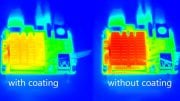
I truly like your exquisitely crafted publication.
It is so informative and so I will from time find space to catch up with your state-of the art info. give my own scientific interests that are truly in sink.
Prof. Charles FL Mbakaya
Analytical/Theoretical Chemist ( With a big interest in shedding light on how the classical converts to quantum realms at faster than light speed and perenially vise versa thereafter; thereby attempting to unmask the everelusive reality in the universe)
Is this your state-of the art info?
The laboratory generation of plasma ‘fireballs’ composed of matter, antimatter, and photons is a research goal at the forefront of high-energy-density science.
The perpetually swirling topological vortices defy traditional physics’ expectations. Topological vortices exhibit parity conservation, charge conjugation, and time reversal symmetry. Matter and antimatter (or substances with chiral properties) are mainly manifested between topological vortices and their twin antivortices, rather than between high-dimensional spatiotemporal matter formed by their interactions.
If researchers are willing to further consider, you can browse https://zhuanlan.zhihu.com/p/697274113 and https://zhuanlan.zhihu.com/p/693933588.
Scientific research guided by correct theories can help humanity avoid detours and failures.
Good luck to the researchers.